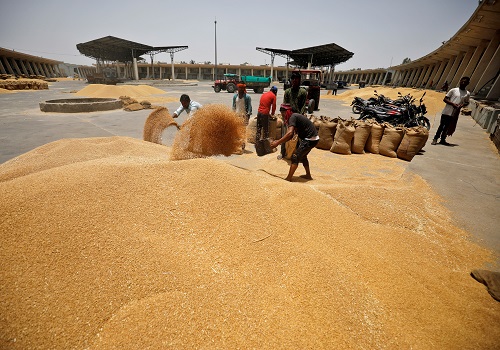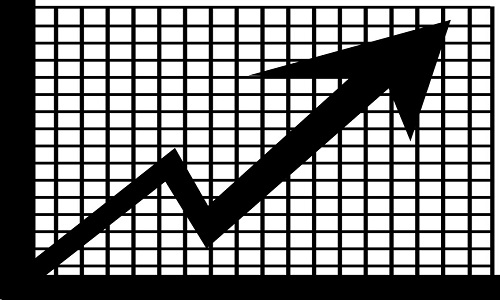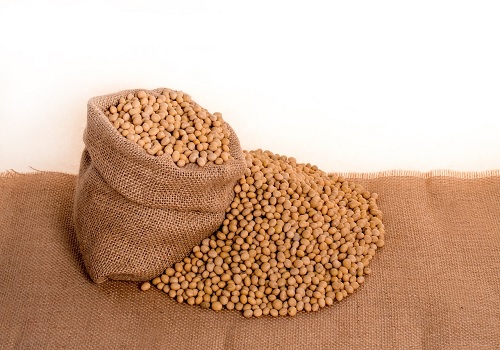EU Wheat Exports Dip as Barley Hits 12-Year Low By Amit Gupta, Kedia Advisory

Follow us Now on Telegram ! Get daily 10 - 12 important updates on Business, Finance and Investment. Join our Telegram Channel
EU Wheat Exports Dip as Barley Hits 12-Year Low
The European Commission has adjusted its agricultural forecasts for 2023/24, lowering EU wheat export expectations due to stiff competition from Russia, while increasing soft wheat ending stocks. Barley production plummeted to a 12-year low, impacted by drought and hot spells in key regions. Maize harvest estimates remained steady after last year's drought-affected crop, while rapeseed production saw a minor uptick, and sunflower seed production was revised down.
Highlights
Wheat Exports Reduced: The European Commission lowered its forecast for European Union exports of common wheat (soft wheat) for 2023/24 from 32 million metric tons to 31 million. This reduction is attributed to strong early-season competition from Russia, causing EU soft wheat exports for the same period to be 22% lower compared to the previous year.
Increase in Wheat Ending Stocks: The reduced export outlook resulted in an upward revision of the Commission's forecast for 2023/24 soft wheat ending stocks, which now stand at 19.1 million tons. This is an increase from the 17.8 million tons expected the previous month but slightly below the stockpile of 19.3 million from the previous season.
Minor Increase in Wheat Production: The increased supply forecast for soft wheat was supported, to a lesser extent, by a 200,000-ton increase in the Commission's estimate of usable production from the year's harvest, which is now estimated at 125.5 million tons.
Barley Production Decreased: In contrast to the wheat forecast, barley's usable production was reduced to a 12-year low of 47.5 million tons, which is 0.9 million tons below the Commission's September estimate. This decrease is attributed to drought and hot spells in Spain and Scandinavia, major barley production zones.
Increased Barley Imports: Due to the decreased barley production, the Commission increased its forecast for EU barley imports to 1.7 million tons, up from the previous estimate of 1.5 million tons, although still below the 2 million tons from the previous season.
Stable Maize Harvest Estimate: The Commission maintained its harvest estimate for maize, currently being harvested, at 59.9 million tons. This is a rebound from the previous year's drought-impacted crop of 53.1 million tons.
Rapeseed Production and Imports: Estimated EU rapeseed production was slightly revised up to 19.8 million tons from 19.6 million. However, projected EU imports of rapeseed were decreased by 200,000 tons to 5.6 million tons.
Lower Sunflower Seed Production: Expected production of sunflower seed, being harvested like maize, was lowered to 10 million tons from the previous estimate of 10.5 million tons.
Conclusion
The European Union's agricultural landscape for 2023/24 is marked by a challenging environment. The reduction in wheat export forecasts, driven by stiff competition from Russia, underscores the complexities of international markets. Barley's 12-year low production, influenced by adverse weather conditions in Spain and Scandinavia, highlights the vulnerability of certain crops to climate fluctuations. Stability in maize harvest estimates signals a promising rebound after last year's drought-induced setbacks. The slight increase in rapeseed production, albeit with reduced import expectations, showcases the EU's adaptability in managing oilseed resources. The downward revision in sunflower seed production adds an element of uncertainty in the region's oilseed sector. These agricultural dynamics emphasize the need for resilience and flexibility in the face of both domestic and global challenges.
Above views are of the author and not of the website kindly read disclaimer










Tag News

China Unveils Policies to Boost Trade Amid Tariff Worries by Amit Gupta, Kedia Advisory












